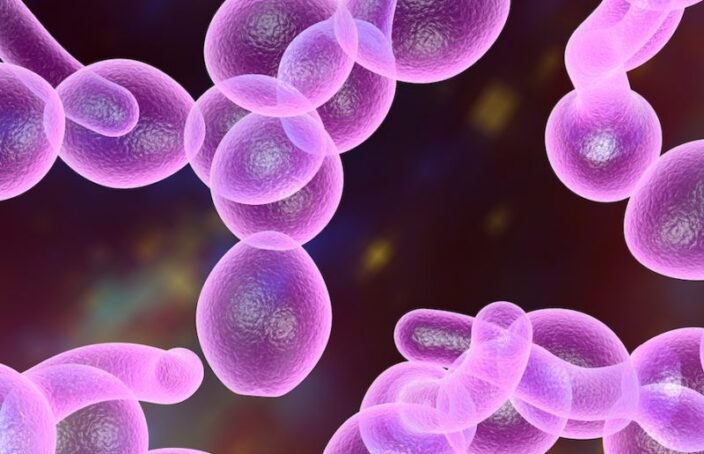Symptoms and Treatment for Candida Overgrowth in Your Gut
I’ll never forget the day I realized something wasn’t right with my body. I had been battling a series of unexplained symptoms—fatigue that wouldn’t lift, bloating after every meal, and constant cravings for sugar. I chalked it up to stress at first, but as the weeks turned into months, I knew I needed answers.
A deep dive into my symptoms and countless conversations with health professionals led to an unexpected culprit: Candida overgrowth in my gut. It was both a relief and a challenge. Relief because I finally had a name for what I was dealing with, and a challenge because overcoming Candida required a holistic approach.
If you’re here, chances are you’re battling similar symptoms or seeking answers about your own health. In this article, I’ll share everything I’ve learned about the symptoms and treatment for Candida overgrowth in the gut, weaving in personal insights and actionable steps you can take to regain control of your health.
What Is Candida Overgrowth?
Candida is a type of yeast that naturally lives in small amounts in your mouth, gut, and other mucosal areas. It’s harmless in moderation and even plays a role in maintaining a healthy microbiome. However, when it grows out of control, it can lead to a condition known as Candida overgrowth.
In the gut, this overgrowth can disrupt the delicate balance of bacteria and yeast, leading to a cascade of digestive and systemic issues.
Symptoms of Candida Overgrowth in the Gut
1. Digestive Distress
- Bloating
- Gas
- Diarrhea or constipation
- Stomach cramps
Personal Insight:
For months, I couldn’t figure out why my stomach felt like a balloon ready to pop after every meal. It didn’t matter what I ate—my gut was always in turmoil. When I addressed the Candida, the bloating became a thing of the past.
2. Persistent Fatigue
Candida overgrowth can lead to nutrient malabsorption and inflammation, leaving you feeling drained no matter how much rest you get.
Personal Insight:
Waking up tired felt like my new normal. Once I began treatment, I was shocked by how much energy I regained—it was like stepping out of a fog.
3. Intense Sugar Cravings
Candida thrives on sugar, and it can manipulate your cravings to keep itself fed.
Personal Insight:
My love for desserts felt uncontrollable. Cutting sugar was one of the hardest parts of my journey, but it was also one of the most rewarding steps I took to starve the Candida.
4. Skin Issues
- Acne
- Eczema
- Rashes
Personal Insight:
I used to think my breakouts were hormonal, but they disappeared almost entirely when I addressed the Candida.
5. Brain Fog
Trouble focusing, memory lapses, and a general sense of mental sluggishness are common.
Personal Insight:
Before tackling Candida, I struggled to finish sentences or recall simple facts. It was frustrating, but it motivated me to dig deeper into my health.
6. Recurrent Infections
Candida overgrowth can lead to yeast infections, oral thrush, and urinary tract infections.
7. Food Sensitivities
An imbalanced gut microbiome can make you more reactive to foods, especially gluten, dairy, and processed items.
What Causes Candida Overgrowth?
Several factors can contribute to an overgrowth of Candida in the gut:
- Antibiotic Use: Kills good bacteria that keep Candida in check.
- High-Sugar Diets: Fuel Candida growth.
- Chronic Stress: Weakens the immune system.
- Alcohol Overconsumption: Disrupts gut health.
- Birth Control Pills: Can alter gut bacteria.
- Weakened Immunity: Makes it harder to control Candida.
How to Treat Candida Overgrowth in the Gut
Treating Candida requires a multi-faceted approach. It’s not just about killing the yeast; it’s about creating an environment where balance can be restored.
Step 1: Starve the Candida
Candida thrives on sugar and refined carbs. The first step in treatment is to eliminate these from your diet.
Foods to Avoid:
- Sugar (including honey and maple syrup)
- White bread, pasta, and rice
- Processed foods
- Alcohol
Personal Insight:
Cutting sugar was the hardest part for me. I didn’t realize how much I relied on it for comfort until I stopped. The first week was tough, but by the second, my cravings began to fade, and my energy improved.
Step 2: Strengthen Your Gut with Probiotics
Probiotics replenish good bacteria in your gut, crowding out Candida and restoring balance.
How to Use Probiotics:
- Eat fermented foods like sauerkraut, kimchi, and unsweetened yogurt.
- Take a high-quality probiotic supplement with strains like Lactobacillus and Bifidobacterium.
Personal Insight:
Adding probiotics felt like giving my gut an army of good guys to fight back. I noticed a significant reduction in bloating within weeks.
Step 3: Use Antifungal Agents
Natural antifungals help kill excess Candida.
Top Natural Antifungals:
- Garlic: Contains allicin, a potent antifungal compound.
- Caprylic Acid: Found in coconut oil, it penetrates the Candida cell wall.
- Oil of Oregano: Powerful but should be used sparingly.
How to Use Them:
- Add raw garlic to your meals.
- Take caprylic acid or oil of oregano as supplements, following dosage guidelines.
Personal Insight:
I started with small doses of garlic and gradually increased it. The results were impressive—my digestion improved, and my energy soared.
Step 4: Support Detoxification
As Candida dies off, it releases toxins into your system, leading to what’s known as a die-off reaction or Herxheimer reaction. Supporting your body’s detox pathways is crucial.
How to Support Detoxification:
- Drink plenty of water.
- Eat liver-supporting foods like beets, dandelion greens, and lemon water.
- Incorporate Epsom salt baths to aid relaxation and detox.
Personal Insight:
During the die-off phase, I felt worse before I felt better—headaches, fatigue, and irritability were common. But sticking to detox practices helped me push through and come out stronger.
Step 5: Rebuild Your Gut Lining
Candida overgrowth can damage the gut lining, leading to leaky gut. Repairing it is essential for long-term health.
Healing Foods:
- Bone broth: Rich in collagen and amino acids.
- Aloe vera juice: Soothes and repairs the gut lining.
- L-glutamine: An amino acid that supports gut health.
Personal Insight:
Sipping bone broth became a comforting ritual. It felt like I was nourishing my body at the cellular level.
Step 6: Maintain Balance
Once Candida is under control, focus on maintaining a balanced gut microbiome through a healthy lifestyle.
Tips:
- Eat a diet rich in fiber, healthy fats, and lean proteins.
- Limit processed foods and sugars.
- Manage stress with mindfulness or yoga.
Personal Insight:
Learning to maintain balance felt empowering. It wasn’t about perfection; it was about consistency and giving my body what it needed to thrive.
When to Seek Medical Help
While many cases of Candida overgrowth can be managed at home, some require professional intervention. Seek help if:
- Symptoms persist or worsen despite treatment.
- You experience severe abdominal pain or unexplained weight loss.
- You have recurrent infections that don’t respond to remedies.
Final Thoughts: Taking Control of Your Gut Health
Candida overgrowth can feel like an uphill battle, but with the right approach, healing is possible. For me, it was a journey of self-discovery—learning to listen to my body, making intentional choices, and embracing a healthier lifestyle.
If you’re facing Candida overgrowth, remember: progress takes time. Be patient, stay consistent, and celebrate the small victories along the way. You have the power to take control of your gut health and feel like yourself again.
Here’s to a happier, healthier you!


